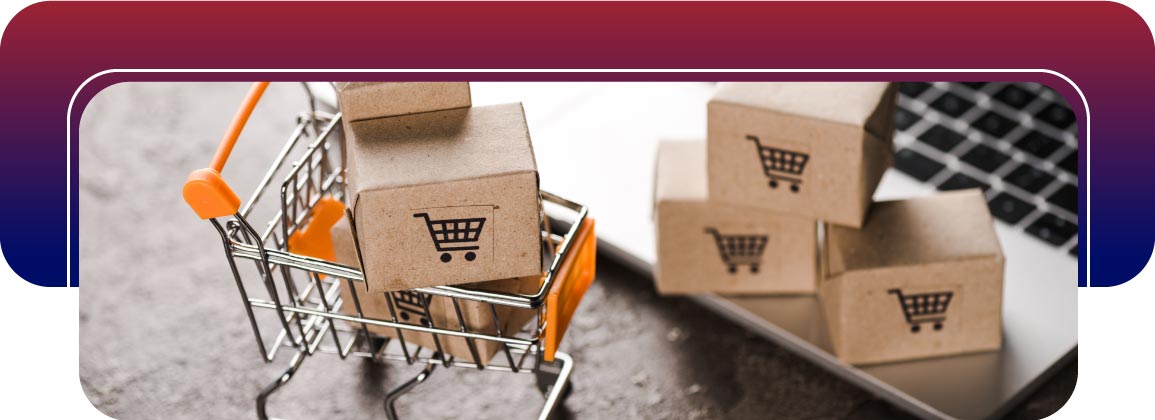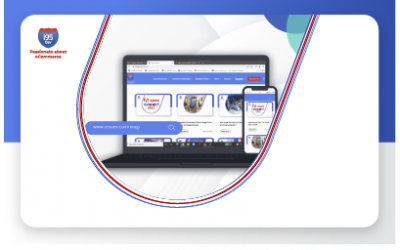Shopify Store Problems Solved by
Right Native and Custom ERP Integrations

Shopify is one of the preferred platforms for building eCommerce stores. Despite its countless benefits, businesses start facing troubles as they scale up. New Shopify stores recorded a growth rate of 62% between March 13, 2020, to April 24, 2020. With the growing team size, customer demographics, order volume, fulfillment schedules, vendors, and inventory management, businesses often notice that their ROI drops instead of increasing with volume. Several problems could cause such setbacks, and in this article, we will have a look at some of the most common issues experienced by growing Shopify stores. We will also see how to solve them using the right native and custom integrations. Dive in deeper to know more.
When Should You Look Out For Integrations
If you are witnessing a steep increase in the number of orders and facing troubles with order fulfillment, it’s high time you look out for integration for your Shopify Store. Another indicator faces difficulties in managing product catalogs, suppliers, and soaring HR costs despite low ROI weight increased volume. These signs could indicate widespread inefficiencies, and in the following section, we will look at the specific trouble areas—currently, the app storehouses 4,200 apps.
The Common Troubles Faced By Growing Shopify Stores And How To Solve Them Using Native And Custom Integrations
When it comes to building and running Shopify eCommerce stores, there are certain common problems faced by all businesses. As Shopify is a marketplace platform leveraged by many sectors and organization sizes, stores might face troubles in core business functions and company-specific operating procedures. There is no need to worry as you can always find a suitable integration to streamline your business processes. Let us look at some of the common problems faced by brewing Shopify stores that are solved by native and custom integrations:
Inventory Management Issues Solved Through Shopify ERP Integrations
Effective inventory management requires businesses to have real-time visibility to available inventory, orders in queue, processes to notify when inventory count goes below a specific threshold, automation to raise purchase orders, and more. However, for this to be effective your sales channels should be integrated with your inventory management system (in this case your ERP system). The integration prevents overselling and underselling of inventory while improving customer shopping experience.
Are you looking to integrate your Shopify/Shopify integration with your ERP system? i95Dev has out-of-the-box integration products for Microsoft Dynamics, SAP Business One, and Sage 100 ERP systems. We can also help you build a custom integration solution for other ERP systems including Enterprise ERP systems (Oracle, Microsoft Dynamics 365, SAP, IFS Applications), Mid-sized ERP (Netsuite, Sage, Infor, Macola) and others like Syspro, Intacct, Epicor, Acumatica, etc
Order Fulfilment Issues
Growing eCommerce stores often struggle with delivering shipments to multiple locations, which overlaps delivery dates and preferences for various shipping companies. This also comes with the need for returns management. Moreover, coordinating with customers regarding the delivery updates also requires fetching real-time updates from delivery partners. Instead of manually communicating with customers and delivery partners, you can manually use the Shopify integrations of your delivery partners to automate data transfer, documentation, and communication. Deliveries integration also allows you to automate waybill generation and reflect the probable delivery dates on your website. All delivery providers like DHL, FedEx, UPS, and USPS have Shopify apps, but it is advisable to develop a native app for managing all delivery providers in one place. You will also need to use various payment options as per customer preferences:
Multi-Channel Distribution
After Covid-19, it became very common for online retailers to run their business across social channels like Facebook and Instagram marketplaces for diversifying their presence on Amazon and eBay apart from their own web store. 29,000+ stores are selling through Instagram as of now, 30,000+ have registered their shops on FB messenger. Multi-channel distribution can become a serious challenge for any online store as operating from each ecosystem requires closed-loop data integration with all other channels. For instance, if you sell a certain product on Amazon, the quantity for that item should automatically be reduced in your central database. Otherwise, you might end up committing the same stock to multiple shoppers across the channels. With the help of native Shopify applications like Codisto or custom full-fledged solutions, you can connect all your sales channels to form a robust distribution network.
During the lockdown, there was a 45% increase in the new customer purchases and local orders shooted up by 176%.
Webstore SEO
A lot of people fail to recognize that going with your own eCommerce store will require you to invest extensively for online visibility. Growing stores often make mistakes when it comes to technical SEO, especially in displaying product information. Search problems arise when your Shopify store doesn’t display the products by the relevant category tags, mismanage URLs, and group the products in the wrong manner.
This confuses the crawlers. You can start by implementing schema markup and optimizing all your URLs, meta descriptions, and visibility parameters like page load speed. Sometimes it may also require integrating with third-party applications for SEO workflow automations.
Sales And Conversion Optimization
Optimizing your Shopify Store for higher conversions is very challenging as the USPs for every sector change from case to case, and the attributes exciting your customers may be different even from your competitor in the same business. To solve such niche-specific and company-specific demands, you can use various integrations for sales analytics, pricing, product bundling, upselling, cross-selling, order recovery, social proof, urgency creation, gifts, and trust-building. Using these integrations will allow your Shopify store to function at higher efficiency for meeting customer preferences. Currently, it has around 1280 sales and conversion apps listed on its website.
Before You Choose An Integration For Your Shopify Store
While looking for a Shopify middleware solution, keep three things in mind: the processes and process parameters whose data you want to integrate with each application, frequency of data exchange, and homogeneity of data formats across all systems.
Selecting Native and Custom Integrations: Keep It Simple and Basic
Without using these integrations, your Shopify store’s efficiency will be limited due to the manual data entry work. To select the right option for your business, the only parameters you should look for are the processes you want to automatically synchronize across functionalities and how frequently/quickly you want data to be exchanged. Also, look out for overlapping functionalities like in the case of accounting solutions and ERP software. Whether native or custom, you should only look out for these aspects and ask your Shopify integration platform provider to select the right option based on your operating model. This will save a lot of time and resources that would be otherwise consumed in weighing all the options regardless of their specialization and bandwidth.
Benefits of Shopify API Integrations For eCommerce Businesses
-
- Using these Shopify integrations will help save innumerable staff-hours and enable you to use your resources in a strategically more suitable manner.
- They will reduce the redundancies in database management and eliminate duplication of work.
With the help of integrated solutions and customized applications, you can leverage novel business strategies and improve your customer experience (CX)
- Having all of these species of data managed through automation allows you to make data-driven business decisions.
- One of the major benefits of using Shopify integrations is outsourcing the business processes to specialist forms and enjoying higher uptime for each store’s functionality.
- As an eCommerce store, they allow you to foster an inclusive ecosystem with partner businesses to develop agile supply chains.
Wrap Up
Both Shopify and Shopify Plus have established themselves as go-to platforms for e-commerce businesses. Still, every organization has its unique set of operating procedures and a distinct business model. With the help of custom and native integrations, it becomes easy to scale up your Shopify Store. Using an integrated ecosystem will allow you harness the specialty of various applications and allow you to focus on your core business. We hope that you find this article helpful in scaling up your Shopify Store.
Book a call and talk to our Shopify integration experts now!
Recent Blogs
Managing Massive Product Catalogs: Why Synchronization is the Key to Efficiency
Managing Massive Product Catalogs: Why Synchronization is the Key to Efficiency Author Category Share The automotive aftermarket industry is vast and highly competitive, requiring businesses...
A Complete Guide to Seamlessly Integrating Adobe Commerce with NetSuite
A Complete Guide to Seamlessly Integrating Adobe Commerce with NetSuite Author Category Share Integrating Adobe Commerce (formerly Magento) with NetSuite ERP can transform the way businesses...
Why Shopify and NetSuite Integration is Crucial for Your eCommerce Success
Why Shopify and NetSuite Integration is Crucial for Your eCommerce Success Author Category Share The digital transformation of commerce is accelerating. According to Gartner, by 2025, a...



